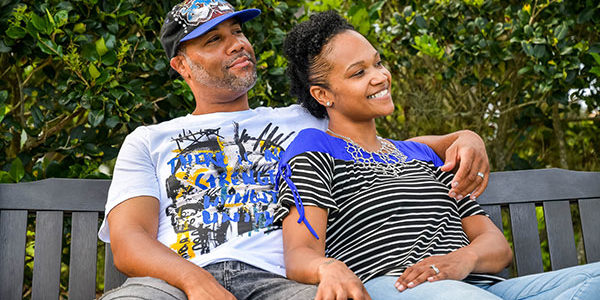“You can do this—this thing, where your body will cease to produce hormones and your skin, hair, muscles, and bones… basically every part of you will notice, go into withdrawals, and stage a coup. Be prepared for this mentally, and you’ll own this ‘thing.’” — Lisa Jey Davis, author
What Happens to Your Body During Menopause?
Menopause is a major milestone in every woman’s life, typically occurring between ages 45 and 55[1]. It marks the end of menstruation and a significant hormonal shift—particularly a decline in estrogen production. While this is a natural and non-pathological phase[2], the reduction in estrogen affects much more than just reproductive health.
Hot flashes and mood swings are commonly discussed, but fewer women are aware of menopause’s impact on musculoskeletal health. Hormonal changes can increase the risk of conditions such as osteoporosis, joint pain, muscle stiffness, and sarcopenia (loss of muscle mass). This article explores how menopause affects bones, muscles, joints, ligaments, and tendons—and what that means for your long-term well-being.
Why Does Menopause Trigger Musculoskeletal Pain?
At the core of these changes lies the sharp decline in estrogen. A woman is born with around 1 million eggs[3]. By puberty, this number drops to approximately 400,000, and with every menstrual cycle, nearly 1,000 are lost[4]. These developing follicles produce estrogen, so as the number of viable follicles decreases, so too does estrogen production.
Estrogen plays a crucial role in maintaining bone density, muscle mass, joint flexibility, and the health of connective tissues. As estrogen levels fall, the body undergoes a series of musculoskeletal changes that can lead to pain, reduced mobility, and increased risk of injury.
The Role of Estrogen in Musculoskeletal Health
Estrogen affects bone, muscle, and connective tissues at the cellular level. It regulates osteoblasts (cells that build bone) and osteoclasts (cells that break down bone), helping maintain bone strength. Estrogen also supports muscle growth and repair by influencing protein synthesis, and it promotes elasticity in ligaments and cartilage to keep joints mobile and pain-free.
When estrogen levels drop, these systems become unbalanced—leading to weakened bones, reduced muscle regeneration, and stiff joints and ligaments.
Bone Health and Menopause: Understanding Osteoporosis
One of the most well-known outcomes of estrogen loss is osteoporosis—a condition where bones become weak, brittle, and more prone to fractures. Bone health is maintained through a constant remodeling process that breaks down old bone and builds new bone[5][6].
Estrogen helps suppress overactive osteoclasts, which are responsible for bone resorption[7]. Without estrogen, this balance is disrupted, accelerating bone density loss. The bones most commonly affected in postmenopausal women are the spine, hips, and wrists—all areas rich in trabecular (spongy) bone, which is more vulnerable to fractures. Other factors such as testosterone, vitamin D, calcium, and phosphorus also contribute to bone health[8].
Vertebral fractures can cause chronic pain, a stooped posture, and height loss—making osteoporosis not only a silent condition but one with real physical and emotional consequences.
Muscle Loss in Menopause: The Hidden Impact of Sarcopenia
Estrogen also plays a vital role in maintaining muscle mass and strength. Its loss can accelerate sarcopenia, a condition characterized by progressive muscle wasting. Estrogen supports satellite cells—the stem cells responsible for muscle repair. With fewer of these, the body’s ability to regenerate and recover muscle tissue after injury is significantly reduced[9].
Estrogen helps regulate the synthesis of proteins like myosin and actin, which are critical for muscle contraction. As estrogen declines, so does the body’s ability to build and maintain strong muscles.
This leads to decreased mobility, strength, balance, and a higher risk of falls and injuries, especially in aging women. Without proper awareness and intervention, sarcopenia can severely impact a woman’s independence and quality of life.
Joint Pain and Stiffness: Estrogen’s Role in Joint Health
Joint pain, or arthralgia, affects over 50% of menopausal women[10]. Estrogen helps maintain articular cartilage and synovial fluid, which cushion joints and reduce friction. As estrogen declines, these structures begin to deteriorate, contributing to the development of osteoarthritis[11].
Studies show that postmenopausal women are more likely to experience joint pain, particularly in the knees and hips[12]. These weight-bearing joints are especially susceptible to stiffness, inflammation, and reduced range of motion. Estrogen also helps modulate inflammatory responses—so its absence makes the joints more vulnerable to pain and swelling[13].
Ligaments and Tendons: Less Estrogen, Less Flexibility
Estrogen also affects ligaments (which connect bones to bones) and tendons (which connect muscle to bone). Research shows that women are more prone to ligament injuries, such as ACL tears, during ovulation when estrogen levels peak and collagen becomes more elastic[14].
At menopause, the opposite happens—reduced estrogen results in stiffer, less flexible collagen, decreasing the tissue’s ability to absorb stress. This can lead to sprains, joint pain, and a limited range of motion.
Tendons may also lose strength and elasticity, making movements like climbing stairs feel more difficult and reducing overall joint power and coordination.
Why Musculoskeletal Health Matters During Menopause
Menopause is a transformative time that brings major hormonal changes—especially for the musculoskeletal system. Conditions like osteoporosis, sarcopenia, joint pain, and ligament stiffness are not inevitable, but they are more likely without proactive care.
Understanding the biological mechanisms behind these changes gives women the tools to act early. With the right information, effort, and mindset, it’s possible to stay strong, active, and in control throughout midlife and beyond.
Greg Conlan.
Menopause. Body Health. Women’s Empowerment. Men understanding Menopause.
References:
[1] World Health Organization, Fact Sheet, 17 October 2022
[2] Peacock et al, Menopause. National Library of Medicine, 21 December 2023
[3] Healthline, 4 May 2023
[4] Holesh et al, National Library of Medicine, 1 May 2023
[5] Osteoporosis Foundation
[6] Science Direct, 2020
[7] Endocrine Society, 24 January 2022
[8] S.H.Gueldner et al, Encyclopedia of Gerontology, 2007
[9] Collins et al, Cell Reports, 2019
[10] Blumer, Post Reproductive Health, 2023
[11] Gokhale et al, Journal of American Orthopedics, 2004; 33:71-80
[12] Srikanth et al, Osteoarthritis Cartilage, 2005; 13:769-781
[13] Harding et al, Cancers, 2022
[14] Chudu-Ogbolu et al, Front Physiol, 2018
If you enjoyed this article, don’t miss out on the exclusive content available in our private area. Gain access to premium insights, expert guidance, and more to support your journey.
and






